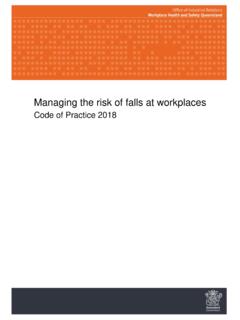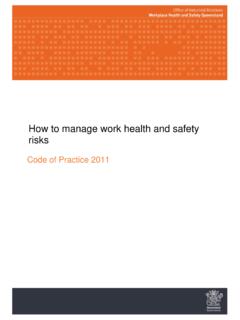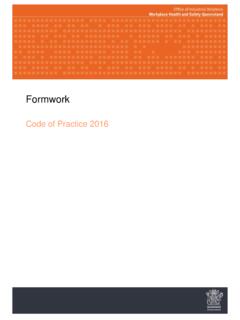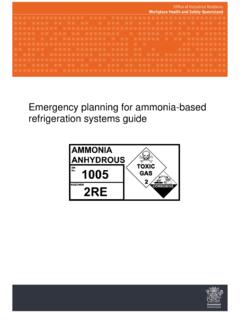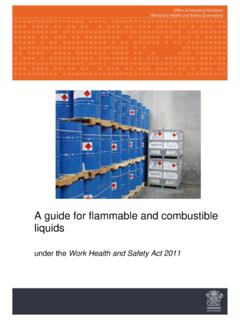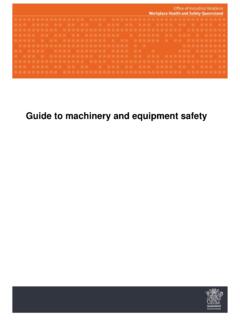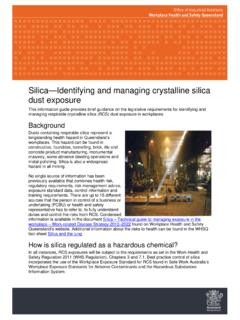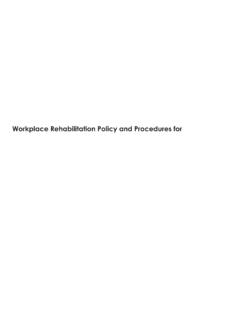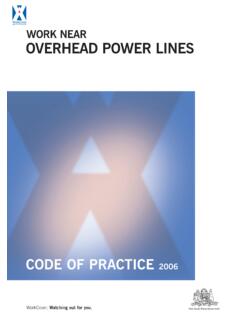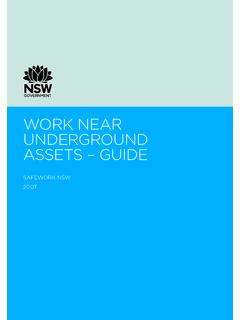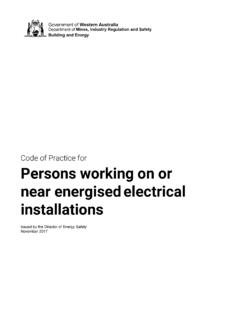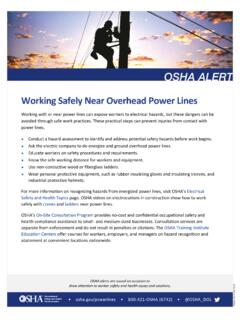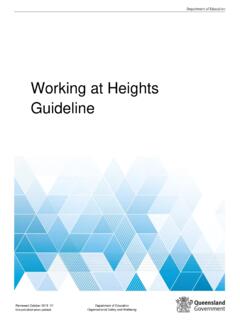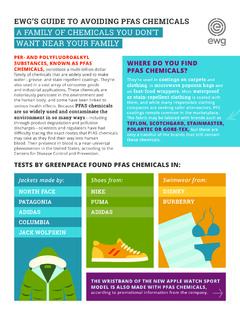Transcription of Working near overhead and underground electric lines
1 Electrical Safety Code of Practice 2020 Working near overhead and underground electric lines (ESOPDF029) Page 1 of 35 Electrical Safety Code of Practice 2020 Working near overhead and underground electric lines Electrical Safety Code of Practice 2020 Working near overhead and underground electric lines (ESOPDF029) Page 2 of 35 This Queensland code of practice has been approved by the Minister for Education and Minister for Industrial Relations under section 44 of the Electrical Safety Act 2002. This code commenced on 2 January 2020. ESOPDF029 The State of Queensland 2020 Copyright protects this document. The State of Queensland has no objection to this material being reproduced but asserts its right to be recognised as author of the original material and the right to have the material unaltered.
2 Electrical Safety Code of Practice 2020 Working near overhead and underground electric lines (ESOPDF029) Page 3 of 35 Contents Legislative framework .. 5 Foreword .. 5 Scope and application .. 5 How to use this Code of Practice .. 6 1 Introduction .. 7 What are electrical risks? .. 7 Who must manage electrical risks? .. 7 What is required to manage electrical risks? .. 7 Information, training, instruction and supervision .. 8 2 The risk management process .. 9 Identify the hazards .. 9 Assess the risks .. 9 Control the risks .. 10 Reviewing the control measures .. 12 3 Unsafe distances .. 13 What is an unsafe distance for an overhead electric line?
3 13 What is an exclusion zone? .. 13 A guide to exclusion zones .. 14 Which exclusion zone applies? .. 14 4 Operating plant near overhead electric lines .. 15 Scope .. 15 Risk management process for operating plant Working near overhead electric lines .. 15 Working in the safety observer zone .. 16 What is the safety observer zone? .. 16 Special provisions for Working in the safety observer zone .. 17 Working in the authorisation zone .. 18 What is the authorisation zone? .. 18 Special provisions for Working in the authorisation zone .. 18 Personnel in contact with the crane, load or operating plant .. 19 5 Work near low voltage overhead electric lines near buildings and structures.
4 19 Scope .. 19 The no-touch and exclusion zones for low voltage lines near buildings and structures .. 19 Exclusion zones for low voltage overhead lines near buildings and structures .. 20 Risk management process for work near low voltage overhead electric lines near buildings and structures .. 20 6 Clearing vegetation near overhead electric lines .. 21 Scope .. 21 Requirements for untrained persons .. 21 Risk management process for clearing vegetation near overhead electric lines .. 22 7 AGRICULTURAL WORK NEAR overhead electric lines .. 23 Scope .. 23 Risk management process for agricultural work near overhead electric lines .. 23 8 Transportation of high loads near overhead electric lines .
5 24 Scope .. 24 Meaning of particular terms used in this chapter .. 24 Transport requirements for high load categories .. 25 What is a high load and what requirements apply? .. 25 Responsibilities electrical safety .. 26 Electricity entity .. 26 Electrical Safety Code of Practice 2020 Working near overhead and underground electric lines (ESOPDF029) Page 4 of 35 Escort service provider electrical safety .. 26 Road transport operator (RTO) electrical safety .. 26 Scoping service provider or network assessor electrical safety .. 26 9 Work near underground electric lines .. 26 Scope .. 27 Risk management .. 27 WHS requirements for excavation work.
6 27 Appendix A Meaning of key terms .. 29 Appendix B Exclusion zones for overhead electric lines .. 30 Appendix C Incidents involving live overhead electric lines .. 34 Mobile crane operation .. 34 Scaffolding work .. 34 Farm machinery .. 34 Irrigation pipes on a rural property .. 34 Tip truck 35 Electrical Safety Code of Practice 2020 Working near overhead and underground electric lines (ESOPDF029) Page 5 of 35 Legislative framework The Electrical Safety Act 2002 (the ES Act) is directed at eliminating the human cost to individuals, families and the community of death, injury and destruction that can be caused by electricity. The ES Act establishes a legislative framework for preventing persons from being killed or injured by electricity, and preventing property from being destroyed or damaged by electricity.
7 The ES Act places the primary electrical safety duty on a person conducting a business or undertaking, who must ensure the business or undertaking is conducted in a way that is electrically safe. Duties are also placed on officers of a person conducting a business or undertaking, workers and other persons at a workplace, as well as electricity entities, designers, manufacturers, importers, suppliers, installers, repairers and persons in control of electrical equipment. The Work Health and Safety Act 2011 (WHS Act) requires persons who have a duty to ensure health and safety to manage risks by eliminating health and safety risks so far as is reasonably practicable, and if it is not reasonably practicable to do so, to minimise those risks so far as is reasonably practicable.
8 The WHS Act provides a framework to protect the health, safety and welfare of all workers at work. It also protects the health and safety of all other people who might be affected by the work. The WHS Act places the primary health and safety duty on a person conducting a business or undertaking, who must ensure, so far as is reasonably practicable, the health and safety of workers at the workplace. Duties are also placed on officers of a person conducting a business or undertaking, workers and other persons at a workplace. In terms of electrical safety, where the ES Act and the WHS Act both apply, the ES Act takes precedence. Foreword This Code of Practice on managing risks when Working near overhead and underground electric lines is made under section 44 of the ES Act.
9 A code of practice is a practical guide to achieving the standards of electrical safety required under the ES Act and the Electrical Safety Regulation 2013 (the ES Regulation). A code of practice applies to anyone who has an electrical safety duty in the circumstances described in the code. In most cases, following a code of practice would achieve compliance with the electrical safety duties in the ES Act, in relation to the subject matter of the code. Like regulations, codes of practice deal with particular issues and do not cover all hazards or risks that may arise. Health and safety and electrical safety duties require duty holders to consider all risks associated with work, not only those for which regulations and codes of practice exist.
10 Codes of practice are admissible in court proceedings under the ES Act and ES Regulation. Courts may regard a code of practice as evidence of what is known about a hazard, risk or control and may rely on the code in determining what is reasonably practicable in the circumstances to which the code relates. Compliance with the ES Act and ES Regulation may be achieved by following another method, such as a technical or an industry standard, if it provides an equivalent or higher standard of electrical safety than the code. An inspector may refer to a code of practice when issuing an improvement or electrical safety protection notice. Scope and application This Code provides practical guidance for persons conducting a business or undertaking on managing electrical risks when Working near energised (live) overhead or underground electric lines .
